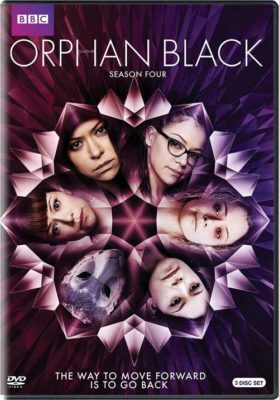
The fourth season of Orphan Black reached new heights of complexity by returning to the character that died in the series premiere and revealing that she knew more than anyone – including her partner – could have imagined. In doing so, we learned that the show’s ultimate Big Bad was very familiar and totally unknown – a seeming paradox that heightened the show’s drama and allowed us to see more deeply into the show’s mythology.
And, oh yeah, there was a hither-to-unknown Castor clone and a brand new Leda clone.
Season four of Orphan Black opened with The Collapse of Nature, an episode that introduced to us to the real Beth Childs (Tatiana Maslany) and gave us a look at her working and personal relationship with her partner, Art Bell (Kevin Hanchard).
It also helped us understand why Beth committed suicide – and why/how Neolution was the show’s real Big Bad.
Over the ten episodes, layers were added (who saw Dr. Duncan and Ira coming?), and – just when it seemed like the show might lurch over the top, it exploded the mythology even further with hints that Neolution’s founder might still be alive (and, yeah, over 150 years old!).
The fourth season explored bioweapons, miracle cures, sibling rivalries and the importance of perspective – plus, Rachel’s a cyborg with her robot eye (with a possible glitch…).
Orphan Black has always seemed to be (like Max Headroom) twenty minutes into the future and the sci part of the show’s sci-fi continued to remain entirely plausible while being only just a bit futuristic. The show’s make-up and practical and visual effects teams outdid themselves.
But, as usual, the show continued to succeed on the strength of its characters, with Tatiana Maslany carrying her usual gigantic portion of that with such skill that even the Emmys were impressed – giving her her second Best Actress – Drama nomination.
A rift opened up between Sarah (Maslany again) and her brother Felix (Jordan Gavaris) when he found he had a biological sister, Adele (Lauren Hammersley); Mrs. S. got to strut her bada$$ stuff – and shed a few tears; Donny (Kristian Bruun) and Allison (yup, Maslany) faced a unique separation, and Helena (Maslany yet again) returned to the wild (and made a serious fashion statement – hats may just be in again).
The character of M.K. (a very Bjork-influenced Maslany) was introduced – a secretive hacker genius who managed to remain off the grid while being firmly attached to it (and who worked with Beth!).
Krystal (yes, Maslany) continued to put things together and come oh-so-close to getting it all figured but… just… not… quite (amusing the hell out of Fee and Art along the way).
Easily the darkest season of the series, season four did not get that one perfect moment of happiness with all the clones in the same room, but given what we’ve been given so far, we can only hope that show ends on one final perfect moment (and maybe even M.K. will be there).
Orphan Black is one of the best shows on TV – in any genre – and season four was its best season so far.
Features include four featurettes (close to an hour of material – but still no commentary tracks!): Back to the Beginning: Recreating the World of Season One; Beth, M.K. and Ira: The Clones of Season Four; Body Horror: The FX of Season Four and Orphan Black: Closer Looks (brief glimpses into unique aspects of each episode: Orphan Flashback; Meeting M.K.; Sibling Rivalry; Our Frenemy Ferdinand; Krystal Unclear; Losing Kendall; The Island of Dr. Duncan; Adele for the Defense; The Good, The Bad and Helena; The Revenge of the Two-Clone Smackdown).
Grade: Orphan Black: Season Four – A+
Grade: Features – B+
Final Grade: A-